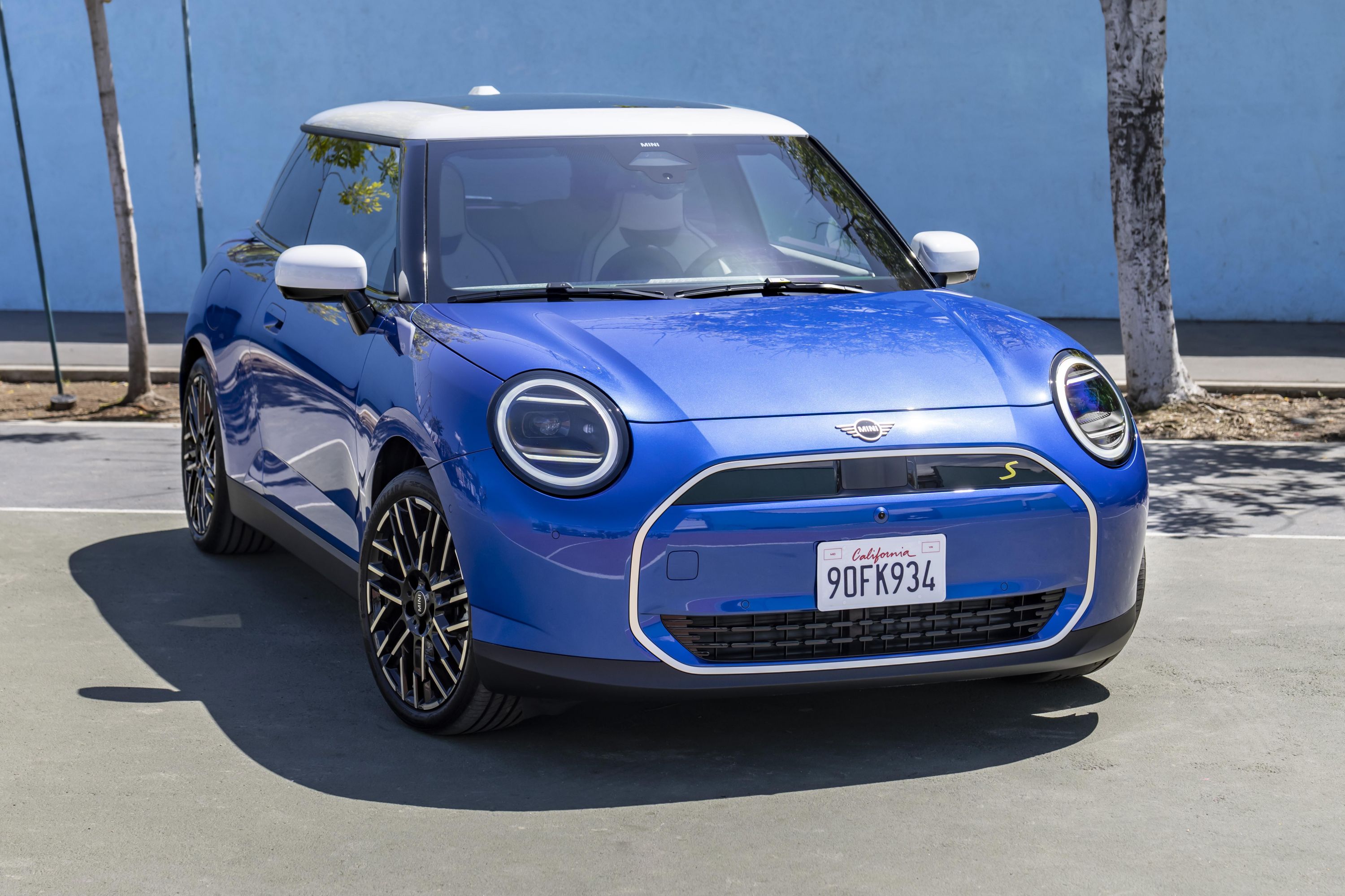Seeing a scratch on your car's paint can feel like a real punch to the gut, can't it? That shiny finish, something you might have saved up for, perhaps even considering car insurance options when you are just 22 years old and worried about monthly payments, suddenly has an ugly mark. It's a common worry for many car owners, and it makes sense to want your vehicle to look its best.
These little imperfections, or sometimes bigger ones, appear out of nowhere, it seems. Maybe a stray shopping cart hit it, or you got a bit too close to a curb. Perhaps, in a way, it was just some traffic situation that caused a tiny scuff. Whatever the reason, these marks really do take away from the nice look of your ride.
This guide is here to help you sort out those annoying paint blemishes. We'll go over what causes them, how to figure out what kind of scratch you have, and what you can do to make things better. It's about helping you keep your car looking good, without needing to spend a ton of money on repairs, you know, hundreds in repairs, which nobody wants.
Table of Contents
- Why Scratches Happen (And Why They Matter)
- Figuring Out Your Scratch: Different Types
- DIY Car Paint Scratch Repair: What You Can Do at Home
- When to Call the Pros for Car Paint Scratch Repair
- Tips for Keeping Your Car Scratch-Free
- Addressing Common Questions About Car Paint Scratch Repair
Why Scratches Happen (And Why They Matter)
Cars, for all their strength and beauty, seem to pick up little marks pretty easily. You might be driving along, and a small stone kicks up, making a tiny chip. Or, perhaps you’re parking, and a tight spot causes a slight brush against something. It’s just a part of owning a vehicle, really.
These marks, even the small ones, can affect how your car looks. A vehicle with a lot of scratches might not seem as well-kept, which matters a bit if you ever think about selling it. People looking at used cars, maybe on sites like CarGurus or Cars.com, often pay close attention to the outside appearance.
Beyond just looks, scratches can cause bigger problems. A deep mark can let moisture get to the metal underneath. Over time, that can lead to rust, which is a much more serious issue to deal with. So, sorting out these marks quickly can save you from bigger, more expensive fixes later on.
Figuring Out Your Scratch: Different Types
Before you try to fix any mark on your car, you need to know what kind of scratch you're dealing with. It's not all the same, you know. Some are just on the very top, while others go much deeper. Knowing the type helps you pick the right way to make it better.
Clear Coat Scratches (Surface-Level)
These are the most common kind of mark you’ll see. Your car has a clear protective layer over its colored paint. When you get a light scratch, it’s usually just this top clear coat that’s been disturbed. You might see it as a hazy line or a very faint mark. You can often feel it slightly with your finger, but it won’t catch your nail much.
These sorts of marks are usually not a big worry. They don't go through to the actual color of your car. They are more of a cosmetic issue, making the car look a bit less polished. You can often make these vanish with some simple home methods, which is pretty good news.
Paint Scratches (Color Layer)
When a scratch goes a bit deeper than the clear coat, it gets into the colored paint layer. You’ll know you have one of these if you can see a different color within the scratch itself, perhaps the primer underneath. If you run your fingernail over it, you’ll probably feel it catch a bit more than with a clear coat mark.
These marks are more noticeable and can't usually be buffed out with just a polish. They need a bit more attention, often involving some touch-up paint. It's still something you can often handle yourself, but it takes a bit more care and the right supplies.
Deep Scratches (Primer/Metal)
This is the kind of scratch that makes you wince. These marks go right through the clear coat and the colored paint, reaching the primer layer or even the bare metal of your car. You’ll see a gray or white color if it’s the primer, or a shiny, dull metal if it’s gone all the way through.
When your fingernail catches firmly in the groove, you know it’s a deep one. These sorts of marks are serious because they leave the metal exposed. That means rust can start to form, which can spread and cause much bigger problems for your vehicle's body. These often need professional help, to be honest.
DIY Car Paint Scratch Repair: What You Can Do at Home
Many common car paint marks can be sorted out right in your own driveway. This is good news if you're trying to save money, perhaps thinking about those high car insurance costs for a 22-year-old. Doing it yourself can save you a good chunk of cash, you know.
For Light Scratches (Clear Coat)
If you've got those faint clear coat marks, you're in luck. The process is pretty straightforward. First, make sure the area around the scratch is very clean. Use car wash soap and water, then dry it completely. Any dirt left behind can make things worse, so that's a key step.
Next, get a good quality scratch removal compound or a fine polish. Put a small amount on a clean, soft cloth, something like a microfiber towel. Then, rub the compound into the scratch using small, circular motions. Apply gentle pressure, but don't press too hard, as a matter of fact.
Keep rubbing for a minute or two, then wipe away any extra compound with another clean cloth. Check your work. You might need to do this a few times to get the best results. The idea is to gently smooth out the clear coat, making the scratch less visible, or even disappear entirely, which is pretty satisfying.
For Medium Scratches (Paint Layer)
For marks that have gone into the color layer, you’ll need a touch-up paint pen or a small bottle of paint that matches your car's exact color code. You can usually find this code on a sticker inside your driver's side door or in your owner's manual. Getting the right match is super important, you see.
Again, clean the area thoroughly. If there are any rough edges around the scratch, you might want to very gently smooth them with some very fine-grit sandpaper (like 2000-grit or higher) and water. Be extremely careful not to sand beyond the scratch itself. Then, clean and dry it again.
Apply the touch-up paint in thin layers. It's better to do several thin coats than one thick one, as a matter of fact. Let each layer dry completely before adding the next. This might take a few hours between coats, so be patient. Once the paint is level with the surrounding area, you can, after a few days, very gently polish it to blend it in. This really helps to make the mark less noticeable.
Tools and Materials You'll Need
To get started on your own car paint scratch repair, having the right things on hand makes a big difference. You don't need a lot of fancy equipment, just some basic items. First, you'll want some good car wash soap and plenty of clean water for cleaning the area. A couple of soft, clean microfiber cloths are also very useful, as they won't scratch your paint further.
For light clear coat marks, you'll need a scratch removal compound or a fine polishing compound. These come in tubes or bottles and are designed to gently smooth out surface imperfections. You might also want some applicator pads, which are usually soft foam, to help spread the compound evenly. Sometimes, a polishing machine, a small one, can help if you have a larger area of light marks, but hand polishing works just fine for most people.
For deeper color-layer marks, you'll need a touch-up paint pen or a small bottle of touch-up paint that precisely matches your car's color code. You can often find these at car parts stores or from your car's dealership. Some very fine-grit wet/dry sandpaper (2000-grit or higher) can be helpful for smoothing, but use it with extreme care. Masking tape can protect areas you don't want to get paint on. Safety gloves are a good idea too, to keep your hands clean and protected.
When to Call the Pros for Car Paint Scratch Repair
While doing it yourself can save you money, there are times when it’s simply better to let someone with more experience handle the job. You know, sometimes a situation is just too big for a home fix. This is especially true for those really deep marks that go down to the metal, for instance. If you see bare metal, or a lot of rust, a professional body shop is usually the way to go.
Large areas of damage, like a whole panel that's been scraped, are also tough to get right at home. Trying to fix a big section yourself can sometimes make it look worse, or create an uneven finish. Professionals have the tools and the skills to repaint larger areas smoothly, making it look as if nothing ever happened, which is really something.
Matching complex paint finishes, like metallic or pearl colors, is another reason to seek out help. These paints have tiny flakes that reflect light, and getting them to blend perfectly requires special techniques and equipment. A good shop can mix the paint precisely and apply it so it matches the rest of your car perfectly. They have the knowledge to make sure the color looks just right, you see.
If you're worried about the value of your car, or if a poor repair might affect its future sale, then a professional job is a safer bet. A bad DIY repair can actually lower your car's value, which is something you definitely want to avoid, especially if you're thinking about buying or selling a car, like on CarGurus. A professional repair can help maintain your vehicle's good looks and its worth.
Tips for Keeping Your Car Scratch-Free
The best way to deal with car paint scratches is to try and stop them from happening in the first place. It’s not always possible, of course, but there are things you can do to lower the chances. Just a little bit of care can make a big difference over time, you know.
When you wash your car, use soft cloths and plenty of water. Avoid using harsh brushes or sponges that can trap dirt and rub it against the paint. Wash your car from top to bottom, rinsing often, to move dirt away. This helps prevent those swirl marks that can look like light scratches.
Think about where you park your car. Try to pick spots away from high-traffic areas, like busy parking lot entrances, where other cars or carts might brush by. Parking further away from other vehicles, or choosing end spots, can give you a bit more space. This reduces the chance of accidental bumps or scrapes from other people opening their doors, for instance.
Applying a good quality wax or paint sealant a few times a year can also help. These products create a protective layer over your car's clear coat. This layer acts as a shield, making it harder for minor scuffs to reach the actual paint. It also makes your car easier to clean, which is pretty nice.
Being mindful while driving, especially in tight spots or heavy traffic, can also prevent new marks. Like in a city car driving simulation, sometimes the traffic can provoke a dangerous situation. Staying a little further from other cars and being aware of your surroundings can help you avoid those little brushes that cause scratches. For more ideas on keeping your car in top shape, you might check out a reputable automotive care site for general maintenance advice.
Addressing Common Questions About Car Paint Scratch Repair
People often have similar questions when they're thinking about getting rid of car paint marks. It's natural to wonder about what you can do yourself and what might cost you more. Here are some answers to common thoughts people have about car paint scratch repair.
Can you fix deep car scratches yourself?
For marks that go all the way to the primer or metal, it's generally best to get professional help. While you can try to apply touch-up paint to cover the spot, getting a smooth, lasting finish that truly protects the metal from rust is very difficult at home. A pro has the tools and skills to do a proper job, which is important for long-term car health. You can learn more about car care on our site.
How much does it cost to fix a car scratch?
The cost really changes a lot based on the scratch's size, how deep it is, and what kind of car you have. A small, light mark you fix yourself might only cost you the price of a scratch removal compound, perhaps $15 to $30. For deeper marks needing touch-up paint, you might spend $20 to $50 on supplies. Professional repairs can range from about $150 for a small, simple job to over $1,000 for very deep or large areas needing full repainting. It really just depends, you know.
What kind of scratches can be buffed out?
Generally, only clear coat scratches can be buffed out. These are the marks that only affect the very top, clear protective layer of your car's paint. If you can't feel the scratch with your fingernail, or it feels very, very slight, then a good polishing compound and some elbow grease will likely make it disappear. Marks that have gone into the color layer or deeper won't buff out; they need paint to fill them in. You can also find more information on paint repair techniques on this page.



Detail Author:
- Name : Isadore Weimann Jr.
- Username : bmcclure
- Email : qgutmann@hotmail.com
- Birthdate : 1992-09-17
- Address : 49246 Marcelina Lodge Eldashire, DC 54601
- Phone : 256-849-5176
- Company : Schumm-Doyle
- Job : Electrical Drafter
- Bio : Minus quidem id eum animi. Eum et sit consequatur sit omnis ea. Voluptates corporis vero quos. Aut suscipit ullam eum ullam nihil nesciunt maxime.
Socials
linkedin:
- url : https://linkedin.com/in/ortizd
- username : ortizd
- bio : Ut rerum officiis cupiditate facilis vitae et.
- followers : 3617
- following : 1262
instagram:
- url : https://instagram.com/ortizd
- username : ortizd
- bio : Vitae excepturi vitae quas. Similique quibusdam provident est deserunt delectus ut commodi.
- followers : 433
- following : 1288
facebook:
- url : https://facebook.com/ortizd
- username : ortizd
- bio : Ea qui enim illum. Ex sed quas nemo ut.
- followers : 699
- following : 1527